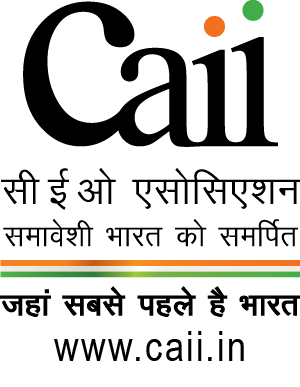72nd SKOCH Summit
Saturday | 20th March 2021

It was in 2016, we published the book “Modi’s Odyssey: Digital India, Developed India,” which was a combined vision and wisdom of domain experts drawn from the government and the private sector. This book laid out the digital roadmap for India between 2016-19. This vision has enriched most of the national flagship projects through the recommendations in this book.
We are now working on our next edited book entitled ‘The Digital State – Highway to AatmaNirbhar Growth’ that takes stock of the journey and lays out the roadmap for the next phase of the digital journey of India to a $10 trillion economy with an AatmaNirbhar Growth defined by us as job generative, spatially dispersed, equitable and sustainable growth that would avoid the middle income trap for India.
The book would be a collection of essays by sectoral experts that lay out the digital roadmap in their respective areas. We believe that the AatmaNirbhar Bharat Programme as envisioned by Prime Minister Modi would yield AatmaNirbhar Growth. This is the essence of “The Digital State.”
72nd SKOCH Summit with the underlying theme of “The Digital States” kick starts this thinking process, lays out initial thoughts of various stakeholders and initiatives a participative dialogue on how Digital India would now pan out to show a solid impact on Inclusive Growth from 2021 to 2025.
Architects of Digital India
Digital India is a part of our contemporary history and heritage. While several people would have a ringside view of this journey and transition over the past two decades, there are a few who have not only seen it first hand but have also contributed majorly towards defining the contours of Digital India today. The biggest testimony to its success has been the COVID year where, the backbone and the population scale infrastructure created by this visionary program and as laid out in our book, “Modi’s Odyssey: Digital India, Developed India” kept the wheels of the country and the economy moving. This session brings together thought leaders who have been there and done that.
Banking in a Digital State
In our book “Modi’s Odyssey: Digital India, Developed India” there were three papers dedicated to the use of digital banking channels. The first chapter argued for going beyond Jan Dhan, Aadhaar and Mobile to move to Cloud, Aadhar and Mobile. We have covered significant ground on this through digitalisation of payments, introduction of UPI, etc. Similarly, a paper by Mr Ram Sewak Sharma argued for Aadhaar at the core of Digital India. This too is now a reality in most national flagship programs using Aadhaar as a proof of identity. Similarly, a paper by Mr Sameer Kochhar argued for Digital Deliverance through taking the entire government financial system electronically for claims, disbursements and tracking of funds. It is easy to see that Digital Banking and Digital State are tied at the hip. This bond has strengthened further during COVID. Given this, there is a need to examine how bankers see Digital Banking shape up 2021-25 to keep in step with the rise of the Digital State. Are there any exclusion issues and how to address those gaps? What would be newer compliances and scaling issues? Where will the disruptions come from?
The Digital State
One very important step towards a Digital State is the institutional and regulatory framework. In India it is a bit late in coming, but hopefully that may deliver a relatively mature framework. The Digital State has to address the problem of plenty caused by each department having too many standalone applications and the government not being connected. This then affects both ease of doing business and ease of living. While there are frameworks and structures in place at the back end, how the front end would develop as a competitive model may be a challenge. There is a need for a higher competition both at the front end and at the back end for de-risking and level playing field. Equally important is a competitive regulation in e-commerce space that takes India towards $1 trillion Digital Economy goal by 2025 while protecting the interests of the consumer and small and micro businesses.
Connected Government
India is a federation of states. There are state subjects, central subjects, and a concurrent list. This can cause a bowl of spaghetti kind of impact on development programs including those related to digital governance. In the connected government initiative at the centre, each ministry may create its own common application stack and then take it national through the state governments. These include programmes like National Digital Health Mission, Education, Agriculture and Land & Property Dematerialisation. This then would become a very interesting field for research on how the states integrate the national connected government vision with that of their own. This panel looks at the vision of state governments on how they see their own connected government approaches panning out between 2021-25.
Digital Law and Order
The book “Modi’s Odyssey: Digital India, Developed India” carried four papers related to use of digital technologies in policing and justice. One was by Mr. Rakesh Asthaana on e-Enabling Police for Better Law Enforcement, the second was e-Enablement of Indian Judicial System by Mr. Tanmoy Chakrabarty, third on Securing India Digitally by Mr. Deepak Maheshwari and the fourth one was Law Enforcement: A View from Jharkhand by Mr. Satya Narayan Pradhan. Not only most of the ground proposed has been covered but also most of these gentlemen are at very senior positions and having a top level view of how things panned out. This panel looks at how imperatives have changed post COVID and post Social Media, becoming such a major influence on shaping up democracy and society. There are issues specific to women and child safety as well. Similarly, most state police departments have a vision on how 2021-25 they are going to become a digitally enabled police force in a digital state. What are going to be the linkages with the judicial system, etc? This panel examines shape of things to come and how our Law and Policing would keep up to speed.
Sponsors

Supported by



